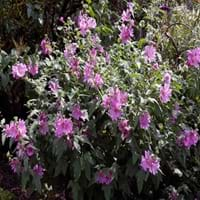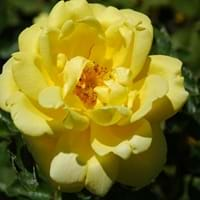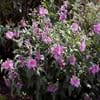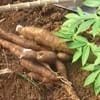Life Span
Annual, biennial or perennial
Perennial
Type
Tender Perennial
Perennial
Origin
Europe, Western Europe, Mediterranean
Hybrid origin
Types
Lavatera Trimestris, Lavatera Thuringiaca, Lavatera Arborea
Not Available
Habitat
Cliffs, Maritime Rocks
gardens, Pastures, Prairies, Terrestrial, Tropical regions
USDA Hardiness Zone
8-10
3-8
Sunset Zone
H1, 14, 15, 16, 17, 18, 19, 20, 21, 22, 23, 24
1a, 1b, 2a, 2b, 3a, 3b, 4, 5, 6, 7, 8, 9, 10, 11, 12, 13, 14, 15, 16, 17, 18, 19, 20, 21, 22, 23, 24
Habit
Upright/Erect
Oval or Rounded
Flower Color
Pink, Violet, Plum
Not Available
Flower Color Modifier
Bicolor
Not Available
Fruit Color
Green, Tan
Non Fruiting Plant
Leaf Color in Spring
Green
Not Available
Leaf Color in Summer
Green
Not Available
Leaf Color in Fall
Green
Not Available
Leaf Color in Winter
Light Green
Light Green
Leaf Shape
Orbicular
Pinnate
Plant Season
Summer
Summer, Fall
Sunlight
Full Sun, Partial Sun
Full Sun, Partial Sun
Type of Soil
Loam, Sand
Loam, Sand
The pH of Soil
Acidic, Neutral, Alkaline
Acidic, Neutral
Soil Drainage
Well drained
Well drained
Bloom Time
Late Spring, Early Summer, Summer, Late Summer
Early Summer, Summer, Late Summer, Early Fall
Tolerances
Drought
Drought
Where to Plant?
Container, Ground
Ground, Pot
How to Plant?
Divison, Seedlings
Grafting, Stem Planting, Transplanting
Plant Maintenance
Medium
Medium
Watering Requirements
Water deeply about once a week
Form a Soil ring to water efficiently, Requires regular watering, Water twice a day in the initial period, Water when soil is dry
In Summer
Lots of watering
Lots of watering
In Spring
Moderate
Moderate
In Winter
Average Water
Average Water
Soil pH
Acidic, Neutral, Alkaline
Acidic, Neutral
Soil Type
Loam, Sand
Loam, Sand
Soil Drainage Capacity
Well drained
Well drained
Sun Exposure
Full Sun, Partial Sun
Full Sun, Partial Sun
Pruning
Pinching, Shearing, Thinning
Prune if you want to improve plant shape, Remove damaged leaves, Remove dead leaves, Remove deadheads, Shape and thin as needed
Fertilizers
Water soluble fertilizers
All-Purpose Liquid Fertilizer, organic fertlizers
Pests and Diseases
Pests and diseases free
Aphids, Bacterial Diseases, Mites, Slugs
Plant Tolerance
Drought
Drought
Flower Petal Number
Single
Not Available
Edible Fruit
No
Not Available
Foliage Texture
Coarse
Not Available
Foliage Sheen
Matte
Not Available
Attracts
Birds, Butterflies
Not Available
Allergy
allergic reaction, Skin irritation
no allergic reactions
Aesthetic Uses
Cottage Garden
Beautification, Bouquets
Beauty Benefits
Not Available
Not Available
Environmental Uses
Prevent Soil Erosion
Air purification
Medicinal Uses
Poultice
No Medicinal Use
Part of Plant Used
Leaves
Flowers
Other Uses
Used in chopped mixed salad
Showy Purposes, Used as Ornamental plant
Used As Indoor Plant
Yes
No
Used As Outdoor Plant
Yes
Yes
Garden Design
Feature Plant, Mixed Border, Screening / Wind Break, Wildflower
Container, Cutflower, Feature Plant, Foundation, Mixed Border
Botanical Name
LAVATERA arborea
ROSA 'Allgold'
Common Name
Tree Mallow
Floribunda Rose
In Hindi
Tree Mallow
रोजा allgold
In German
Baum Mallow
rosa Allgold
In French
Arbre Mallow
rosa TousPlaqué
In Spanish
árbol de la malva
rosa allgold
In Greek
δέντρο Μολόχα
rosa allgold
In Portuguese
Mallow
rosa allgold
In Polish
drzewo Mallow
rosa allgold
In Latin
ligno malvae
Rosa allgold
Phylum
Magnoliophyta
Not Available
Class
Magnoliopsida
Not Available
Family
Malvaceae
Rosaceae
Clade
Angiosperms, Eudicots, Rosids
Angiosperms, Eudicots, Rosids
Tribe
Malveae
Not Available
Subfamily
Malvoideae
Rosoideae
Number of Species
Not Available
Importance of Tree Mallow and Floribunda Rose
Want to have the most appropriate plant for your garden? You might want to know the importance of Tree Mallow and Floribunda Rose. Basically, these two plants vary in many aspects. Compare Tree Mallow and Floribunda Rose as they differ in many characteristics such as their life, care, benefits, facts, etc. Every gardener must at least have the slightest clue about the plants he wants to plant in his garden. Compare their benefits, which differ in many ways like facts and uses. The medicinal use of Tree Mallow is Poultice whereas of Floribunda Rose is No Medicinal Use. Tree Mallow has beauty benefits as follows: Not Available while Floribunda Rose has beauty benefits as follows: Not Available.
Compare Facts of Tree Mallow vs Floribunda Rose
How to choose the best garden plant for your garden depending upon its facts? Here garden plant comparison will help you to solve this query. Compare the facts of Tree Mallow vs Floribunda Rose and know which one to choose. As garden plants have benefits and other uses, allergy is also a major drawback of plants for some people. Allergic reactions of Tree Mallow are allergic reaction and Skin irritation whereas of Floribunda Rose have no allergic reactions respectively. Having a fruit bearing plant in your garden can be a plus point of your garden. Tree Mallow has no showy fruits and Floribunda Rose has showy fruits. Also Tree Mallow is not flowering and Floribunda Rose is not flowering . You can compare Tree Mallow and Floribunda Rose facts and facts of other plants too.




